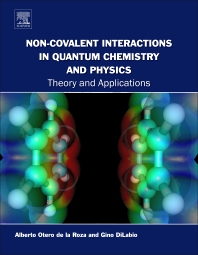Books in Physics
Books in Physics
Physics titles offer comprehensive research and advancements across the fundamental and applied areas of physical science. From quantum mechanics and particle physics to astrophysics and materials science, these titles drive innovation and deepen understanding of the principles governing the universe. Essential for researchers, educators, and students, this collection supports scientific progress and practical applications across a diverse range of physics disciplines.

Lectures on Special Relativity
- 1st Edition
- M. G. Bowler
- English

Application of New Cybernetics in Physics
- 1st Edition
- Oleg Kupervasser
- English

Elements and Formulae of Special Relativity
- 1st Edition
- E. A. Guggenheim
- L. L. Green
- English

Neutron Scattering – Applications in Biology, Chemistry, and Materials Science
- 1st Edition
- Volume 49
- Felix Fernandez-Alonso + 1 more
- English

Non-covalent Interactions in Quantum Chemistry and Physics
- 1st Edition
- Alberto Otero de la Roza + 1 more
- English

Biomechanics of Living Organs
- 1st Edition
- Yohan Payan + 1 more
- English

Advances in Atomic, Molecular, and Optical Physics
- 1st Edition
- Volume 66
- English

Advances in Imaging and Electron Physics
- 1st Edition
- Volume 200
- English

Transition Metal Oxide Thin Film-Based Chromogenics and Devices
- 1st Edition
- Pandurang Ashrit
- English

Light Scattering in Planetary Atmospheres
- 1st Edition
- V. V. Sobolev
- D. ter Haar
- English